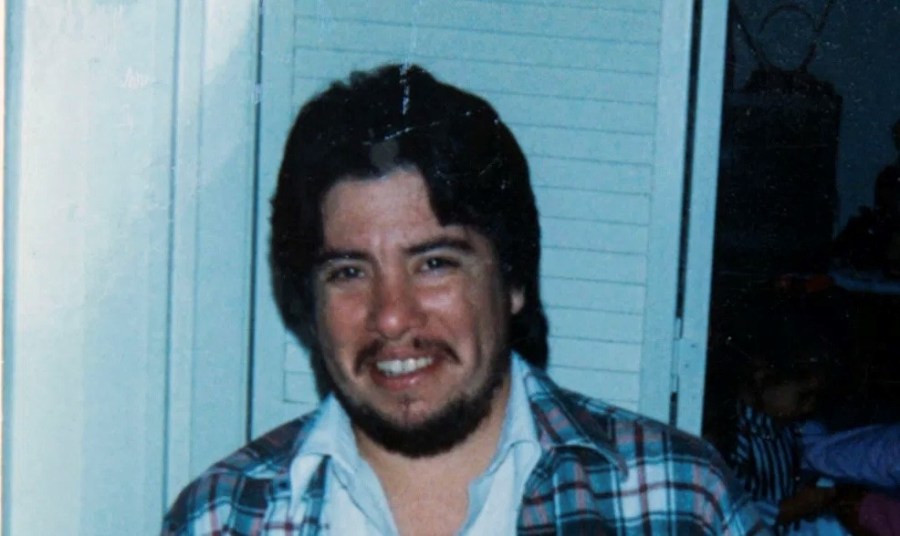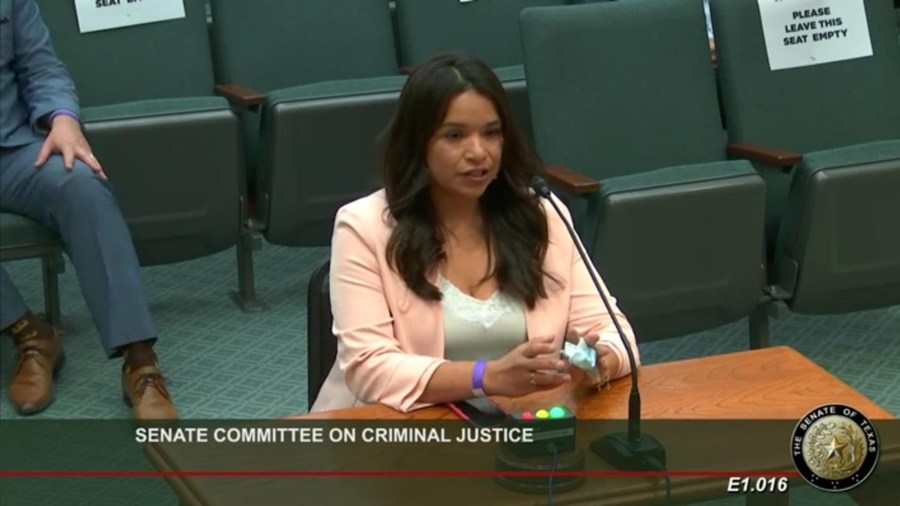A national missing persons website helped one family find closure after a decade. Now they want more agencies to use it.
HOUSTON (NewsNation Now) — An advertisement in the credits of a Lifetime movie led a grieving Texas woman to answers about her missing father’s whereabouts. Now, she’s hoping a new law she advocated for in Texas will be the missing link for thousands of families still waiting for information about loved ones.

The last time Alice Almendarez saw her dad, John Almendarez, was in June 2002. The father of 5 disappeared in Houston, Texas.
“He sat in the backyard and watched us play,” Almendarez said. “He walked us around. He walked us to the park. He took me on bike rides. He was just a girl dad.”
After filing a missing person’s report, the family searched for him for several days.
Weeks turned to months. Months turned to years and there were still no clues as to where he could be.
“To have someone just vanish off the face of the earth is the emptiest feeling ever,” Almendarez said.
Then one day, nearly 12 years later, Alice turned on the TV and an advertisement in the credits of a Lifetime movie lead her to a life-changing resource.
“That website was called Outpost for Hope, basically it’s for people that fall off the grid,” Almendarez said. “It could be foster kids that go missing, human trafficking, missing persons cases. On there, there was a link to NamUs. I had never heard of NamUs before.”
NamUs is the National Institute of Missing and Unidentified Persons System.
It’s an online database for missing, unidentified, and unclaimed person cases in the United States. It is fully funded by taxpayers’ dollars through the Department of Justice, Office of Justice Programs and National Institute of Justice.
Medical examiners, coroners and law enforcement officials from around the country can send over detailed case information for missing people including DNA of unidentified or unclaimed bodies, fingerprints and dental records for the unclaimed deceased.
All the clues are used in hopes that NamUs scientists will use their forensic technology and investigative team to solve the case.
The program is currently managed by the University of North Texas Health Science Center in Fort Worth just 4 hours north of Houston.
It’s free for the public, law enforcement, medical examiners and coroners to use.
Officials see the back end of the site showing all information surrounding a case, while the public sees just enough details to describe who a person could be and where they were last seen.
When Almendarez looked online at the NamUs website, she searched the database for unidentified bodies and details for one unnamed man stood out.

“It was an unidentified Hispanic male,” Almendarez said. “Everything resembled my dad… his height, the approximate weight and the shirt that he was found in was a Houston Astros shirt. My dad was the biggest Houston Astros fan, so when I saw that, it’s like I knew that was my dad.”
She contacted NamUs, did a mouth swab and sent her DNA to local officials who sent her tests off to NamUs scientists. They ran her saliva against the DNA stored for that man. The process lasted 6 months. The results proved that John Doe turned out to be her father John Almendarez.
“So from 12 years of searching, once we contacted NamUs, it took about 2 weeks to get our DNA taken and about 6 months from that day to find him,” Almendarez said. “It would’ve saved us 11 and 1/2 years if we would have known about NamUs a long time ago.”
She discovered Houston investigators found his body weeks after he was reported missing. His death was ruled an accidental drowning.
Police said he had no personal belongings or identification on him. Almendarez says he drowned near their neighborhood in Buffalo Bayou in Houston.
“Everyone knew him as Johnny,”Almendarez said. “Everybody in that neighborhood knew my dad by his name.”
In 2004, two years after police found his body, Harrison County officials buried him in a nameless grave just 10 miles from her childhood home.
“Before my high school graduation (in 2004), I would say, ‘do you have anyone that matches his description?’ They would tell me no,” Almendarez said.“All these years later, I found out that he was in the morgue that I was at asking for him the entire time.”
The police department had his missing person’s report. The county had his body. But no one connected the dots between the two.
Her story is one of thousands.
According to NamUS, 600,000 people go missing in the U.S. every year. As of June 2021, there are nearly 20,000 missing persons cases entered into an online public system.
NamUs has helped resolve more than 5,000 missing, unidentified and unclaimed persons’ cases so far.
Despite the success, NamUs officials say many law enforcement agencies are not using the free tool.

It’s a problem Almendarez believed could be solved through legislation, so she turned her pain into purpose. This summer, the Texas Senate unanimously passed “John and Joseph’s Law,” named after her father and another missing man discovered through the database.
In June, Governor Greg Abbott signed that bill into law. The bill goes into effect on Sept. 1, 2021 and will not require any additional funding.
Texas is now one of 11 states that requires all law enforcement agencies to enter data on missing persons cases into the NamUs system. Some states give agencies 30 days to do so. Other state laws require 60 days, 90 days or more.
“The law enforcement, medical examiner, coroner can enter missing, unidentified or unclaimed,” said NamUs Executive Director BJ Spamer. “For the missing person’s cases, even family members and victim advocates can make a primary entry into NamUs, so a family member doesn’t have to wait 30 days or 60 days or 90 days. They can enter that case into NamUs themselves.”
Spamer says they are in contact with several agencies to train them on the database, but without additional funding or staffing for the program, there is no practical way to provide oversight.
“I think it’s very important to have all these cases in one central system to search and compare against one another,” Spamer said. “Of course, you also want to leave the local agencies with enough time to use their local resources before they enter into names because fortunately most of our missing persons are found alive and well.”
Without a national law, Spamer says there is no uniform system set in place to keep all agencies on the same page. A problem Almendarez hopes can be solved sooner than later.
“There has to be some kind of law, some national law not just a state law,” Almendarez said. “Otherwise, we’re going to keep on with this silent disaster.”
NamUs officials say they are now seeing a backlog of cases and they will not be accepting requests for forensic services at this time.
This change is happening at the same time the contract with the University of North Texas Health Science Center ends this summer and the new contract with non-profit, RTI International will begin this fall.
RTI International has offices in North Carolina, California , Colorado , D.C. , Georgia, Illinois, Massachusetts , Maryland, Michigan and around the world.
Several officers told NewsNation’s Felicia Bolton that NamUs is a great tool, but without adding more manpower to their departments, it’s unlikely they can keep up with the workload.










